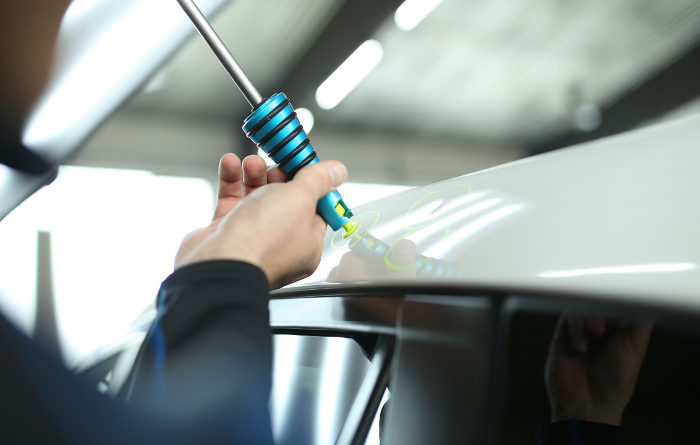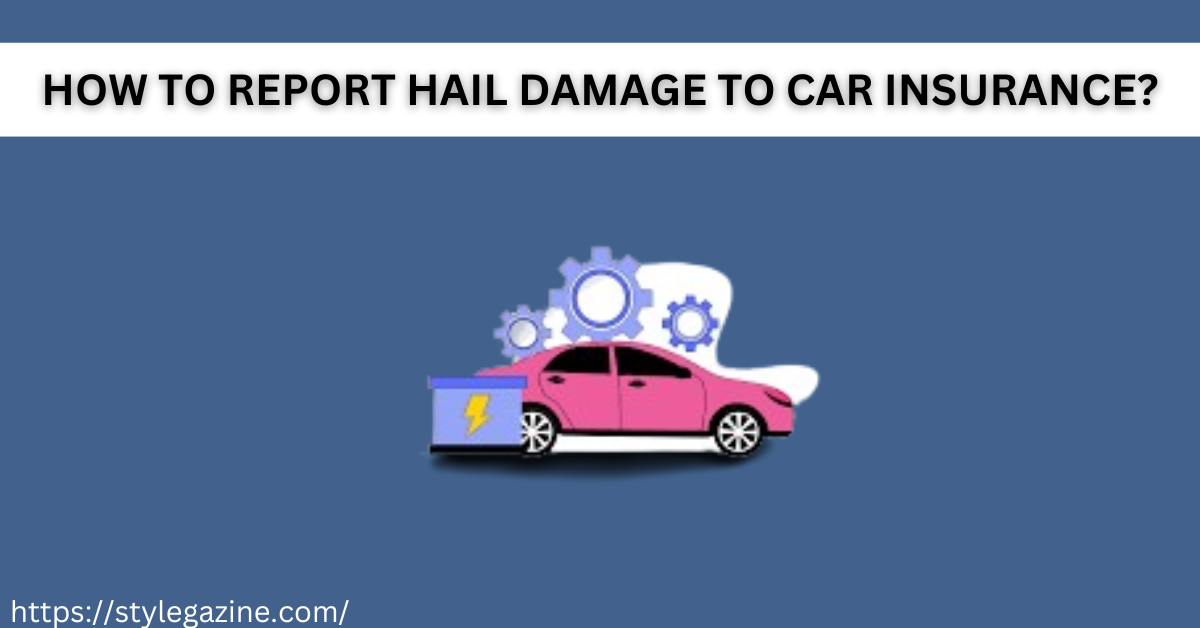Hailstorms can potentially cause significant damage to vehicles, including dents, cracks, and other costly repairs. Comprehensive car insurance offers coverage for such damages, providing a financial safety net for policyholders. However, the process of reporting hail damage to your car insurance can feel overwhelming and complex. This guide aims to simplify this process by providing a step-by-step walkthrough of effectively reporting hail damage to your insurance provider, ensuring a smooth and efficient claims process. First, it’s crucial to thoroughly assess the extent of the damage inflicted by the hailstorm. Take note of any visible dents, cracks, or broken windows, and consider taking photographs as evidence for your claim. Next, review your insurance policy to understand your coverage for hail damage and your deductible amount, which you’ll be responsible for paying before your coverage kicks in. Once you’re familiar with your policy, contact your insurance provider to report the hail damage. Be prepared to provide details about the hailstorm, the extent of the damage, and any documentation or photos you have. Your insurance provider will likely arrange for an inspection of your vehicle to assess the damage further. Following the inspection, obtain repair estimates from reputable auto repair shops, keeping in mind that you’re not obligated to use the insurer’s preferred shops. With all necessary documentation in hand, file your claim with your insurance provider, either online, over the phone, or through a mobile app. Remember to pay your deductible and await approval from your insurer before proceeding with the repairs. Throughout the process, maintain open communication with your insurance provider and follow up as needed to ensure a timely resolution. By following these steps, you can confidently report hail damage, ultimately getting your vehicle back on the road in optimal condition.
1. Assess the Damage
Before contacting your insurance provider, take the time to assess the hail damage to your vehicle thoroughly. Look for dents, cracks, broken windows, and any other visible signs of damage. Taking photos of the damage can be beneficial as visual evidence when filing your claim.
2. Review Your Insurance Policy
Understanding your insurance policy is crucial before filing a claim for hail damage. Review your policy to determine if you have comprehensive coverage, as this type of coverage typically covers damage caused by hailstorms. Additionally, note your deductible amount, as you will be responsible for paying this amount before your insurance coverage kicks in.

3. Contact Your Insurance Provider
Once you’ve assessed the damage and reviewed your insurance policy, contact your insurance provider to report the hail damage. Be prepared to provide details such as the date and time of the hailstorm, the extent of the damage, and any relevant photos you’ve taken. Your insurance provider will guide you through the next steps of the claims process.
4. Schedule an Inspection
In many cases, your insurance provider will arrange for an inspection of your vehicle to assess the extent of the hail damage. An adjuster may conduct this inspection in person or via virtual inspection. Be sure to cooperate fully during the inspection and provide any requested documentation or information.
5. Obtain Repair Estimates
After the inspection, gathering repair estimates from reputable auto repair shops is essential. While your insurance provider may suggest preferred repair shops, you’re not obliged to use them. It’s advisable to seek estimates from various shops to ensure fair repair pricing. By obtaining multiple estimates, you can compare costs and decide where to have your vehicle repaired. This step is crucial in ensuring that you receive quality repairs at a reasonable price, ultimately maximizing the value of your insurance coverage. Additionally, don’t hesitate to ask questions or seek clarification about the repair process and costs from the repair shops. This proactive approach will help you make the best choice for your vehicle’s repairs while maintaining control over the process.
6. File Your Claim
Once you have the necessary documentation, including the inspection report and repair estimates, you can file your claim with your insurance provider. This can typically be done online, over the phone, or through a mobile app, depending on your insurer’s preferred method of communication. Be sure to provide all relevant information and documentation to support your claim.
7. Pay Your Deductible
After filing your claim, it’s essential to remember that you’ll need to pay your deductible upfront before your insurance coverage takes effect. The deductible amount is contingent on your policy terms, so ensure you have this sum earmarked to cover the repair costs. Setting aside the necessary deductible amount ensures a smooth claims process and expedites your vehicle’s repair.
8. Await Approval and Repairs

Once your claim has been filed and your deductible paid, your insurance provider will review the claim and determine the coverage amount. Upon approval, you can proceed with scheduling the repairs with the auto repair shop of your choice. Your insurance provider may guide the repair process and may even offer assistance in coordinating repairs.
9. Follow Up
After the repairs have been completed, it’s important to follow up with your insurance provider to ensure that all necessary documentation has been submitted and that any outstanding payments have been processed. This will help ensure your claim is fully resolved, and you can move forward with peace of mind.
Conclusion:
Reporting hail damage to your car insurance doesn’t have to be complicated; it can be streamlined by following a few essential steps and maintaining open communication with your insurance provider. First and foremost, staying organized is key – document all aspects of the damage thoroughly, including photos and written descriptions. Next, reach out to your insurance provider promptly, providing them with the necessary information about the hailstorm and the extent of the damage. Be prepared to schedule an inspection of your vehicle to assess the damage accurately. Once the inspection is complete, obtain repair estimates from reputable auto repair shops, collecting multiple quotes to compare prices. When filing your claim, be transparent and provide all relevant documentation to support your case. Remember that you will likely need to pay a deductible before your insurance coverage kicks in, so be prepared for this expense.
